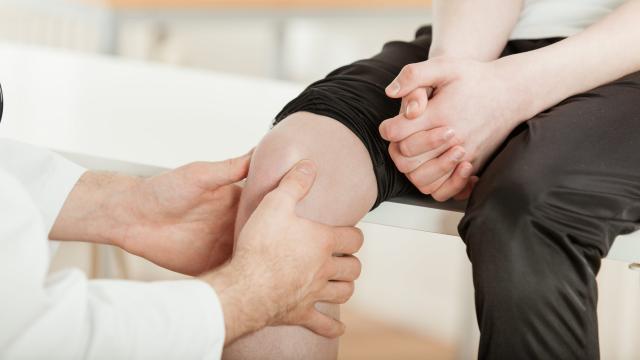As parents, we should trust our kids’ doctors. But we should also be aware of what is standard procedure, and what is not.
A few years ago, abuse allegations against Larry Nassar rocked the world of U.S. Gymnastics. Nassar was found guilty of sexually abusing young girls under the guise of providing them medical treatment, and ignoring the protocols created to help keep patients safe. No parent or child was at fault — Nassar used his power in the most conniving of ways — but it can serve as a horrific reminder to become familiar with what we should expect at our children’s routine physical exams, and what we should do if something doesn’t feel quite right.
Here’s what parents need to know, based on the American Academy of Pediatrics recommendations and other reports:
Should parents stay in the examining room with their children?
Parents usually stay in the room with young children. But teenagers have a choice, and some prefer that mum or dad wait outside.
You have the right to request a medical chaperone
For sensitive procedures, such as breast or genital exams, the AAP recommends a medical chaperone be present. You should be informed that you have a right to request a chaperone, which will usually be a nurse or medical assistant. If a chaperone is not available and you’d like one to be there, you should have the option of postponing your exam.
Doctors should leave when a child is getting undressed
Staff should leave the room as children get undressed. A nurse or assistant should first give the child a robe to wear and a sheet to cover them.
Doctors should keep the child comfortable
Doctors should do everything they can to keep the child physically and psychologically comfortable. According to the AAP’s policy on protecting children from sexual abuse, “Pediatricians must explain to parents and verbal children why they are performing each element of the examination and respect their need for modesty by providing appropriate draping and allowing privacy while changing.”
Here are some routine tests to expect at your child’s annual exam
Tests for girls
- External genital exam. During a routine exam, your paediatrician will look at the external genitalia to check for anomalies or physical signs of suspected abuse. If a child is uncomfortable or refuses, force should never be used.
- Breast exam. For a teenage girl, a doctor will usually just look at her breasts quickly during an annual checkup to see where she is in her development. Most teens don’t need manual breast exams unless they have a family history of breast problems. If a doctor does perform the optional test, it should be done “with the pads of the fingers, not the finger tips or palm of the hand, and the patient should wear a gown, with only one breast exposed at a time,” according to a New York Times report.
- Pelvic exam. It is rare that a girl younger than 21 would need a pelvic exam, unless the patient is experiencing pain, abnormal bleeding, unusual discharge, or other symptoms. A doctor may also wish to perform a pelvic exam on a young woman if she has not had a menstrual period by the age of 15, or three years after her breasts have started developing. If your daughter does need an exam, here’s what to know. The process should take 3 to 5 minutes, and the doctor should be sensitive, gentle, and take the time to answer any questions you might have first.
- First gynecologist visit. Girls should have their gynecologist visit between the ages of 13 and 15, according to the American College of Obstetricians and Gynecologists. This visit might just be chat about the patient’s medical and sexual history, and how to stay healthy. Pap tests should begin at age 21, or three years after beginning vaginal intercourse.
Tests for boys
- Testicular exams: Starting from babyhood, boys have testicular exams during annual check-ups. They can opt out if they’re uncomfortable, but it is a way for doctors to check for potentially concerning lumps and bumps, and make sure everything is developing normally. For this test, boys remove their underwear or drop them to their knees. Young children often lay down for the test, but starting at age 12 or 13, they typically stand up. Doctors should use gloves as they feel each testicle. There is no internal penetration, and the test typically lasts less than a minute. A doctor should also teach the patient how to perform monthly testicular self-exams starting at the age of 15.
[referenced id=”578135″ url=”https://www.lifehacker.com.au/2014/03/three-self-exams-everyone-should-perform-regularly/” thumb=”https://www.gizmodo.com.au/wp-content/uploads/sites/4/2014/03/10/lmx5ju0f0kcwxlmnfngx-300×169.jpg” title=”Three Self Exams Everyone Should Perform Regularly” excerpt=”Cancer sucks. We still don’t know exactly what causes it or how to reliably cure it. Our best chance is…”]
What to do if you feel something isn’t right with your child’s medical exam
The New York Times suggests that if you’re unsure about any exam or treatment that your doctor recommends, you should ask if there’s an alternative available, as there usually is one. If you’re still not comfortable, postpone the procedure and get a second opinion.
If you have any concerns about sexually inappropriate examinations, report them to the clinic’s or medical facility’s administration, the AAP states. You also have a right to report the actions to your state’s protective service for investigation.
This article was originally published in 2018 and updated on June 21, 2021 to provide updated context and align the content with current Lifehacker style guidelines.

Leave a Reply
You must be logged in to post a comment.